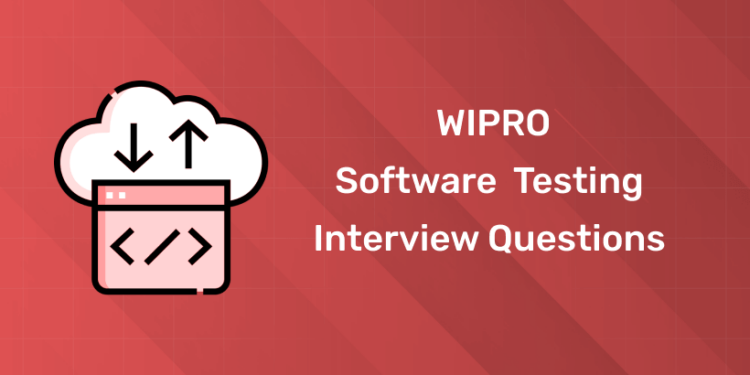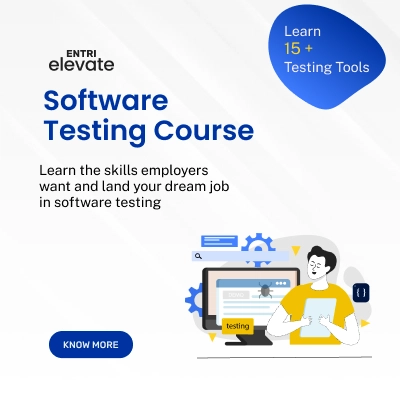Table of Contents
Wipro is a global IT, consulting and business process services company. Aspiring to join Wipro as a software tester? This guide will help you navigate through the interview process, with a focus on preparation tips and commonly asked software testing interview questions.
Overview of Wipro
Founded in 1945, WIPRO is a leading global end to end IT transformation, consulting and business process services provider and a pioneer in Indian IT Market with decades of experience.. They have a strong work culture, continuous learning and career growth. So it’s a great place for IT professionals.
Why Join Wipro as a Software Tester?
- Career Growth: Wipro has structured career development programs.
- Learning and Development: Access to various training programs and certifications.
- Innovative Projects: Work on latest technologies and methodologies.
- Global Exposure: Work with clients and teams from around the world and get international experience.
Preparation Tips for Wipro Software Testing Interviews
1: What is software testing?
- Know the Basics: Make sure you have a good understanding of manual testing concepts, methodologies and tools.
- Revise Key Concepts: Focus on the fundamentals like SDLC, STLC, defect life cycle, test planning and test case design.
- Practice Common Questions: Familiarize yourself with common questions and practice your answers.
- Know Wipro: Research about Wipro’s work culture, projects and recent developments.
- Mock Interviews: Do mock interviews to build confidence and improve your communication skills.
Top Wipro Software Testing Interview Questions
1. What is Software Testing?
Answer: Software testing is the process of finding out the differences between input and output when given. It ensures the software is bug free.
2. What are the types of software testing?
Answer: Types of software testing are:
- Manual Testing: Testing software manually without using any tools.
- Automated Testing: Using software tools to execute test cases.
- Functional Testing: Verifying the software against functional requirements/specifications.
- Non-Functional Testing: Testing performance, usability and reliability of the software.
Learn Software Testing from QA Experts! Get Free Demo Classes Here!
3. What is the difference between verification and validation?
Answer:
- Verification: It is checking whether the software conforms to specifications. It is a static process.
- Validation: It is checking whether the software meets the requirements and expectations of the user. It is a dynamic process.
4. What is the defect life cycle?
Answer: The defect life cycle, also known as the bug life cycle, is the journey of a defect from its creation to its closure. The stages are:
- New: Defect is found and logged.
- Assigned: Defect is assigned to the developer.
- Open: Developer starts working on the defect.
- Fixed: Developer fixes the defect.
- Retest: Tester retests the defect.
- Closed: Defect is verified and closed.
- Reopen: If defect still exists, it is reopened.
5. What are test cases and why are they important?
Answer: Test cases are a set of inputs or conditions under which to test a software system. They are important because they provide a structured way of testing and ensure all features are tested.
6. What is a Test Plan?
Answer: A test plan is a document that covers scope, approach, resources and schedule of testing. It includes test items, features to be tested, testing tasks and who will do each task.
7. What is the difference between white-box and black-box testing?
Answer:
- White-Box Testing: Testing based on the internal structure of the software. Also known as glass box or structural testing.
- Black-Box Testing: Testing based on the functionality of the software without knowing the internal structure. Also known as functional testing.
8. What is regression testing?
Answer: Re-running the previously executed tests to ensure the new changes did not break the existing functionality.
9. What is boundary value analysis?
Answer: Boundary value analysis is a testing technique where test cases are created to focus on the boundary values of input domains. It helps to find defects at the edges of input ranges.
10. What is equivalence partitioning?
Answer: Equivalence partitioning is a testing technique where input data is divided into equivalent partitions. Each partition represents a set of valid or invalid states for the input data to reduce the number of test cases.
11. How do you order test cases in manual testing?
Answer: Test cases are ordered by risk, criticality and business impact. High priority test cases are executed first to test critical functionality first.
12. What is a test environment?
Answer: A test environment is the software and hardware setup where the testing team tests. It includes the software configuration, hardware and network settings.
13. What are the levels of testing?
Answer:
- Unit Testing: Testing individual units or components of the software.
- Integration Testing: Testing multiple units or components.
- System Testing: Testing the whole system.
- Acceptance Testing: Testing to ensure the system meets the requirements and is acceptable to the user.
14. What is test coverage?
Answer: Test coverage is the amount of testing done by a set of tests. It is used to see what has been tested and what has not.
15. What is usability testing?
Answer: Usability testing is testing how user friendly and intuitive the software application is. It is about the user’s experience and satisfaction.
16. What are the entry and exit criteria in software testing?
Answer:
- Entry Criteria: Conditions that must be met before testing can start, such as test environment setup and test data availability.
- Exit Criteria: Conditions that must be met before testing can be stopped, such as test cases completed and critical defects fixed.
17. What to do when the developer disagrees with the defect found?
Answer: Clearly communicate the defect with supporting evidence, such as screenshots or logs. If the disagreement continues, escalate to test lead or manager for resolution.
18. What is exploratory testing?
Answer: Exploratory testing is when testers test without pre-defined test cases. It relies on the tester’s experience and intuition to find defects.
19. What is “shift-left” in testing?
Answer: Shift-left testing means moving testing activities earlier in the development lifecycle. The goal is to find and fix defects as early as possible to reduce the cost and effort of fixing later.
20. What is load testing?
Answer: Load testing is testing a system under a specific load, such as a large number of users or transactions. It helps to find performance bottlenecks.
21. What is stress testing?
Answer: Stress testing is testing a system under extreme conditions, such as high traffic or resource exhaustion. It helps to see how stable and robust the system is.
22. List the differences between Sanity Testing and Smoke Testing.
Answer:
|
Parameters |
Sanity Testing |
Smoke Testing |
|---|---|---|
|
Definition |
Sanity testing is performed to check whether the new functionality/ bug has been fixed. |
Smoke testing is performed to make sure that the critical functionality of the system is working correctly. |
|
Purpose |
The goal of sanity testing is to verify rationality. |
The goal of smoke testing is to verify stability. |
|
Documentation |
Sanity testing isn’t documented. |
Smoke testing is documented. |
|
Who performs |
Testers perform sanity testing. |
Software developers or testers perform smoke testing. |
|
Software build stability |
The software build is relatively stable at the time of sanity testing. |
The software build may be either stable or unstable during smoke testing. |
23.What is the difference between web application and desktop application in the scenario of testing?
Answer: The difference between a web application and desktop application is that a web application is open to the world with potentially many users accessing the application simultaneously at various times, so load testing and stress testing are important. Web applications are also prone to all forms of attacks, mostly DDOS, so security testing is also very important in the case of web applications.
23.List the differences between Quality Assurance (QA) and Quality Control (QC).
Answer:
|
Parameters |
Quality Assurance (QA) |
Quality Control (QC) |
|---|---|---|
|
Definition |
QA is a group of activities that ensures that the quality of processes used during software development is always maintained. |
QC is a group of activities to detect defects in the developed software. |
|
Focus |
QA focuses on assuring that the quality requested will be achieved. |
QC focuses on fulfilling the quality request. |
|
Orientation |
QA is process-oriented. |
QC is product-oriented. |
|
Tool Type |
QA is a managerial tool. |
QC is a corrective tool. |
|
Example |
Verification |
Validation |
Entri’s Software Testing Course
If you’re looking to excel in software testing and land a job at top companies like Wipro, consider enrolling in Entri’s comprehensive Software Testing Course. This course covers all essential aspects of software testing, providing you with the skills and knowledge required to succeed in your career. You’ll gain hands-on experience, learn from industry experts, and be well-prepared for your interviews.
Conclusion
Preparing for a software testing interview at Wipro requires a strong understanding of testing concepts, thorough practice of common interview questions, and a solid preparation strategy. With the right approach, you can ace your interview and secure a rewarding career as a software tester at Wipro.
Are you aspiring for a booming career in IT? Then check out |
|||
Full Stack Developer Course |
Python Programming Course |
Data Science and Machine Learning Course |
Software Testing Course |
Frequently Asked Questions
What is the selection process for a software tester at Wipro?
The selection process typically includes an online aptitude test, technical interview rounds focusing on software testing concepts, and an HR interview to assess fit and soft skills.
How should I prepare for a Wipro software testing interview?
Revise core testing concepts, practice common interview questions, research Wipro’s work culture, and participate in mock interviews to improve your communication skills.
What kind of projects can a software tester expect to work on at Wipro?
Projects range across various industries, including finance, healthcare, and retail, focusing on both manual and automated testing using the latest tools and methodologies.
What skills are Wipro looking for in a software tester?
Key skills include a strong understanding of testing methodologies, proficiency in test case design and execution, familiarity with automation tools, and good problem-solving abilities.
What are some core concepts in software testing that I should focus on?
Focus on concepts like SDLC, STLC, test planning, test case design, defect life cycle, regression testing, and automation testing tools and frameworks.
What is the average salary for a software tester at Wipro?
The average salary for a software tester at Wipro varies based on experience and location but generally ranges from INR 3,00,000 to INR 7,00,000 per annum for entry-level positions.
What should I include in my resume for a software testing position ?
Highlight your technical skills, relevant experience, certifications, knowledge of testing tools and methodologies, and any significant projects or achievements.














